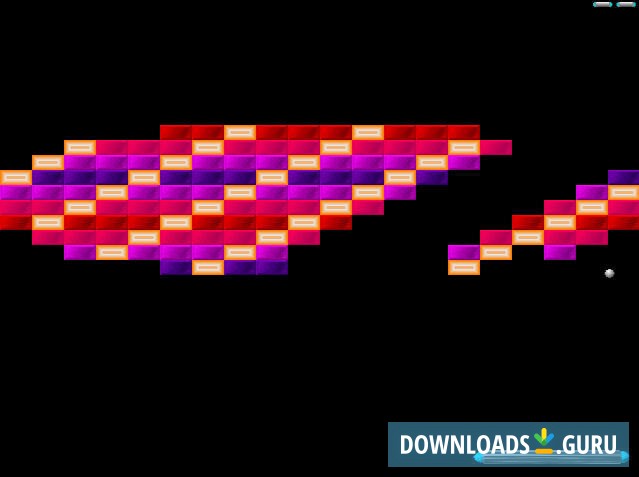

The ball's trajectory will also differ depending on how the player controls it with the paddle. Unlike other Breakout clones, the ball on DX-Ball 2 can travel freely at any angle and trajectory instead of being fixed at certain angles. The game will end once all spare paddles have been lost, or after the selected board-set has been completed. If the player misses the last or only ball in play, a paddle will be lost. For instance, some Power-Ups may speed up game progress by enhancing the paddle with guns or splitting the ball into multiple balls, while other Power-Ups may increase the difficulty by speeding up the ball or shrinking the paddle. The player may choose to catch these with the paddle, or avoid them, depending on the specific Power-Up and its effect.

As bricks are being cleared, random Power-Ups will occasionally released upon impact (see Power-Ups).

Some bricks will take multiple hits before they clear, while other bricks will appear to be unbreakable, invisible or combustible. The player controls a paddle at the bottom of the screen by using the mouse, keeping one or more balls in play by bouncing them into a field of bricks to clear them. ContentsĪs a common Breakout-style game, the object is to clear the screen of all bricks, in order to advance to the next board. While a total of five board packs were released for the game, DX-Ball 2 was eventually succeeded by Rival Ball in 2001. Additional board packs can then be installed for more boards, whereas Board Pack 1 will expand the demo board-sets to 25 boards each, for a total of 150 boards.
Dx ball for windows vista free#
The free demo thereby comes packed with a total of 24 boards divided into 6 board-sets of 4 boards search.

DX-Ball 2 also introduces the feature of board-set selection, allowing the player to select between different sets of boards to play. The game also features two new Power-Ups, an easy to play "Kid-Mode", and a hotseat multiplayer mode, alongside an original soundtrack by SideWinder. Welch, the sequel is foremost remarked by the introduction of its 16-bit high-colour engine, presenting textured bricks and background graphics in vivid colours. It’s not hard to play but it has its annoying moments but most importantly it’s colorful and entertaining.DX-Ball 2 is a brick buster game for Microsoft Windows, developed by Longbow Games. When it comes to casual arcade games, DX-Ball is a great example. Apart from the good stuff, the blocks you destroy can also release powerups that can mess up your game if you don’t avoid them. There are 18 powerups to collect and they can split your ball into three pieces, convert it into a fireball, make it move faster, increase the size of your paddle and so on. Since watching a ball move at an average speed hitting one or two blocks every 10 seconds might make you yawn, DX-Ball introduces powerups which serve a variety of purposes. Powerups to help you along or make things worseĭX-Ball aims to make things interesting from the beginning and keeps them that way until you complete the game. Some blocks are initially indestructible and others simply can’t be hit out of pure bad luck because the ball might not follow the trajectory you need it to. There are blocks that need a single hit to be removed while others take more, or even require hitting from a certain angle. Sounds simple enough and it actually is, until the level structure start to become more complex. The goal of the game is to clear the screen of existing blocks that come in various colors and forms using a ball which you strike with a paddle that can only move on a horizontal axis. It’s based on a very simple principle and offers tons of fun for those who enjoy this genre thanks to its large number of levels, each one unique and more challenging than the previous. DX-Ball is one of the most popular ball-and-paddle arcade games ever made for PC.


 0 kommentar(er)
0 kommentar(er)
